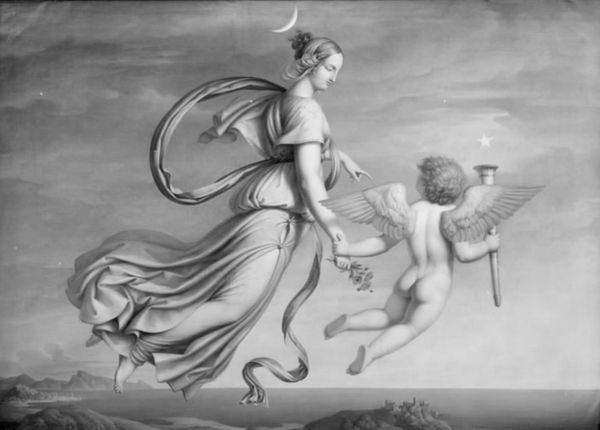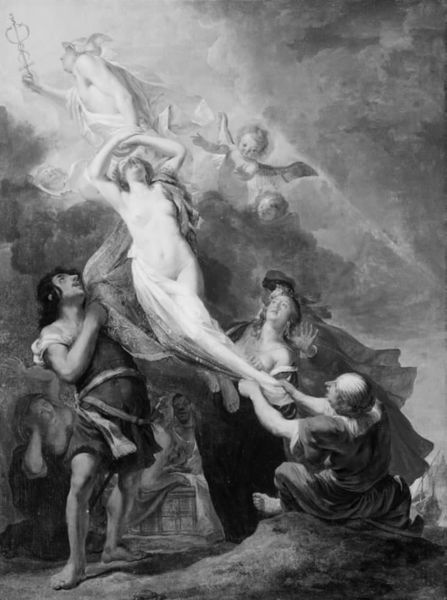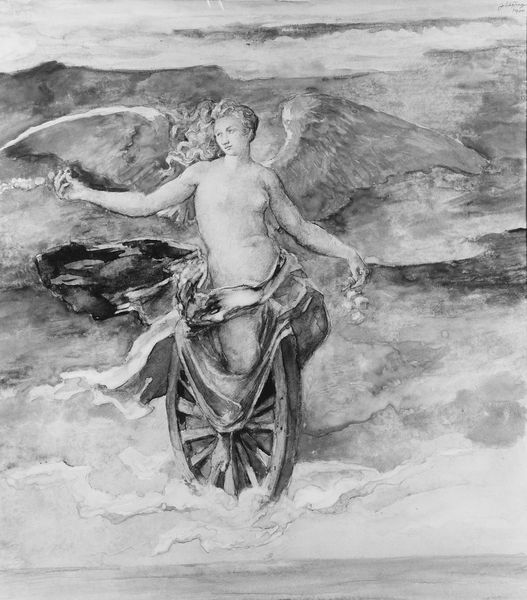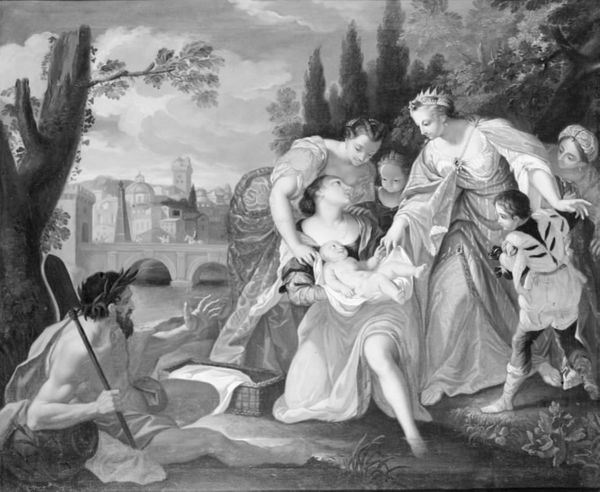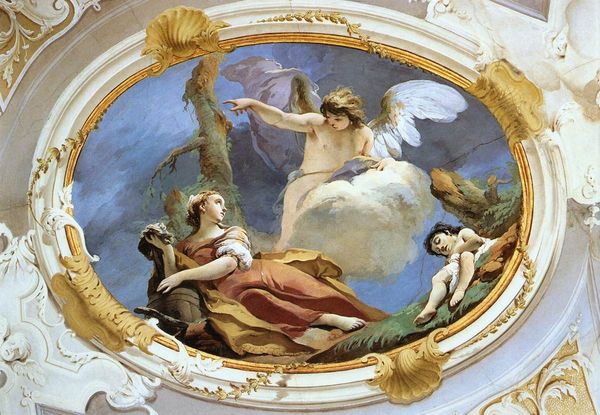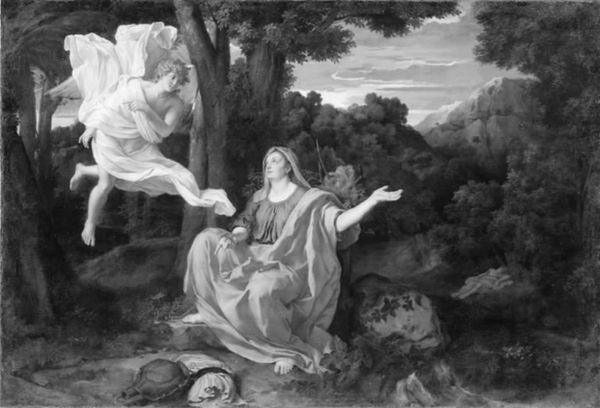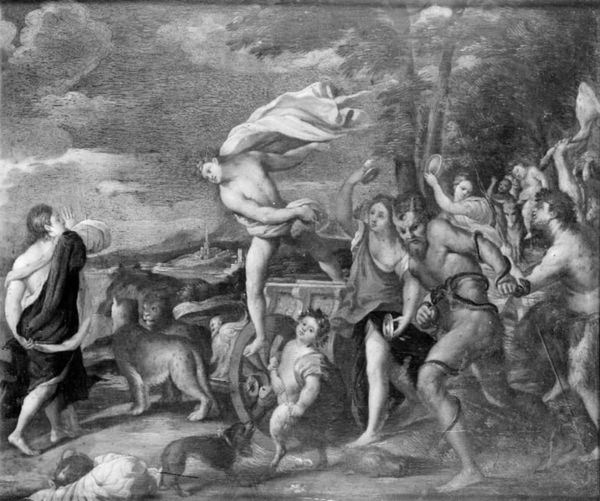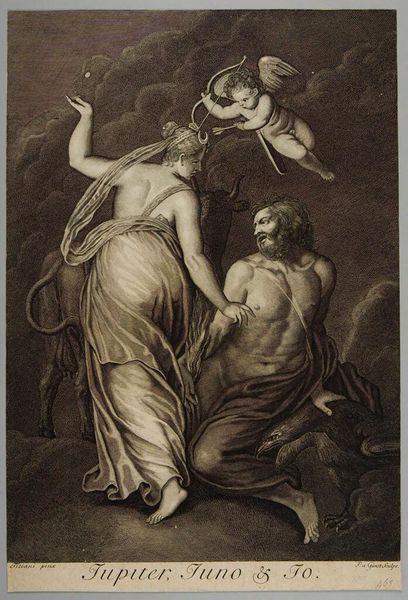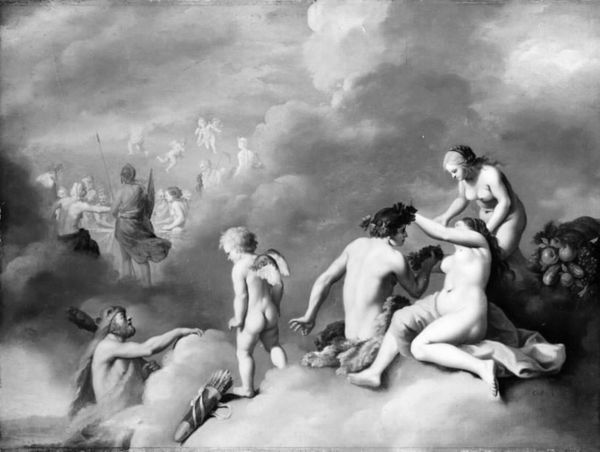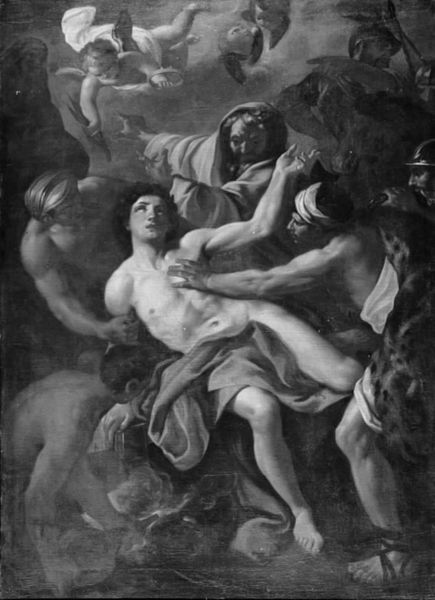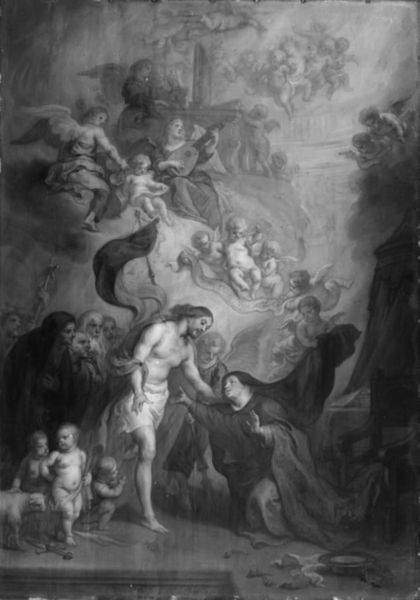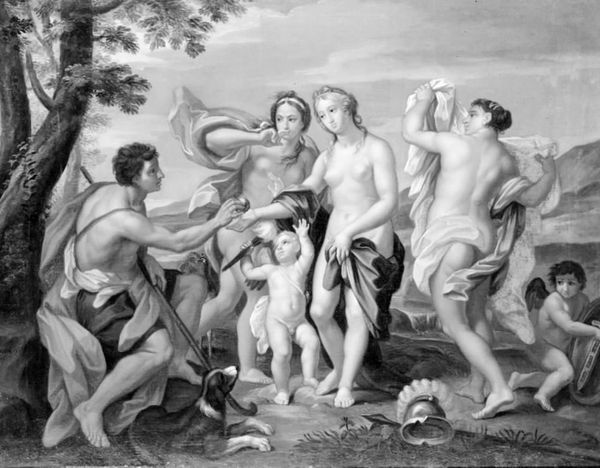
painting
#
neoclacissism
#
allegory
#
painting
#
landscape
#
romanticism
#
black and white
#
monochrome photography
#
monochrome
#
monochrome
Dimensions: 108 cm (height) x 150.5 cm (width) (Netto)
Editor: This is J.L. Lund’s "Aurora," created in 1821, now at the SMK. It's... surprisingly monochromatic, considering the title suggests a vibrant dawn. I wonder, what do you see when you look at it? Curator: For me, it's about the choices, the artist's decisions on materials, and the societal conditions of production. Lund consciously limits his palette, likely as an aesthetic nod to classical sculpture and maybe, due to pigment accessibility, it speaks to economic factors affecting artistic expression in his time. Did he prepare the canvas himself, and if so, what were the conditions like? Editor: That’s interesting! I hadn't considered the physical aspects, only the aesthetic. Curator: Consider the socio-political context. Neoclassicism was intertwined with power structures. It romanticizes earlier eras as its means to address then present problems by visualizing other ideal models to exist and compare to contemporary society. Even something that may appear ‘beautiful’ on first inspection may conceal inequalities related to labor involved or available resources allocated differently among artisans vs artist, how did those imbalances come about back then? Editor: I see your point. Thinking about art in terms of material and production broadens our perspective. It is something so visible in older eras when industrialism had not completely dominated the field. Curator: Exactly! By asking these material-based questions, we understand better those past connections, how the world then structured shaped artworks on material levels too: revealing narratives within them—how values impacted the means for doing. Editor: I’ll never look at a neoclassical painting the same way again. It is never “just” paint and a brush, really. Curator: Precisely. The art object as a point of access for cultural context and class-driven labor questions—that's materialist analysis’s value.
Comments
No comments
Be the first to comment and join the conversation on the ultimate creative platform.
